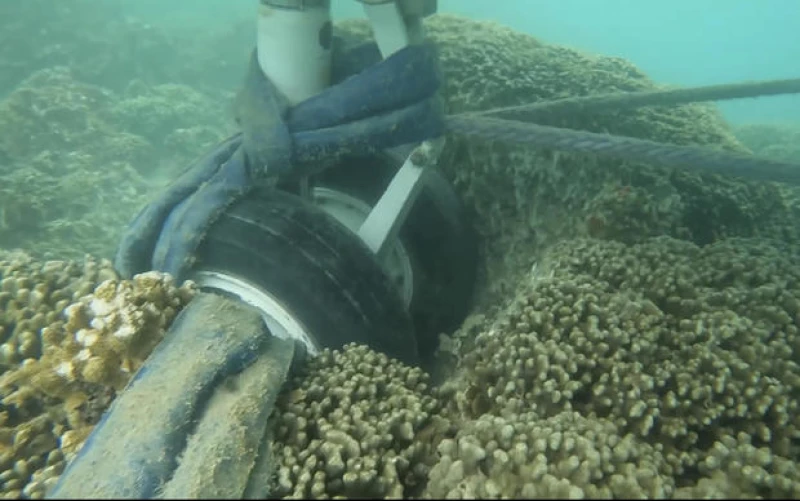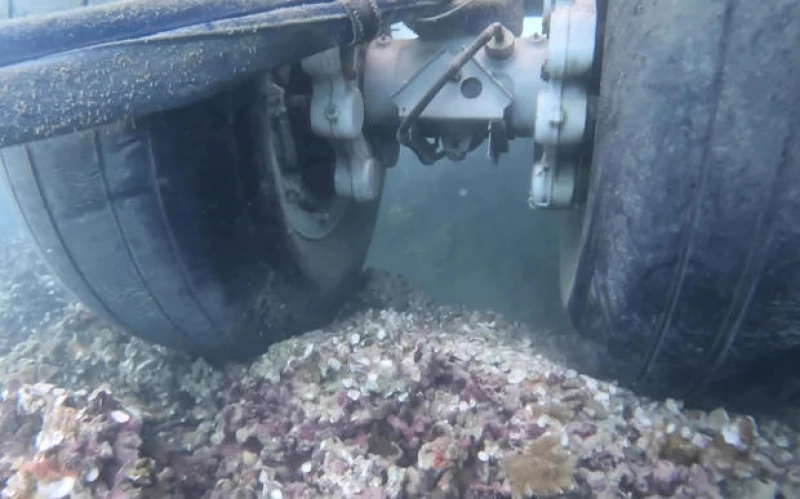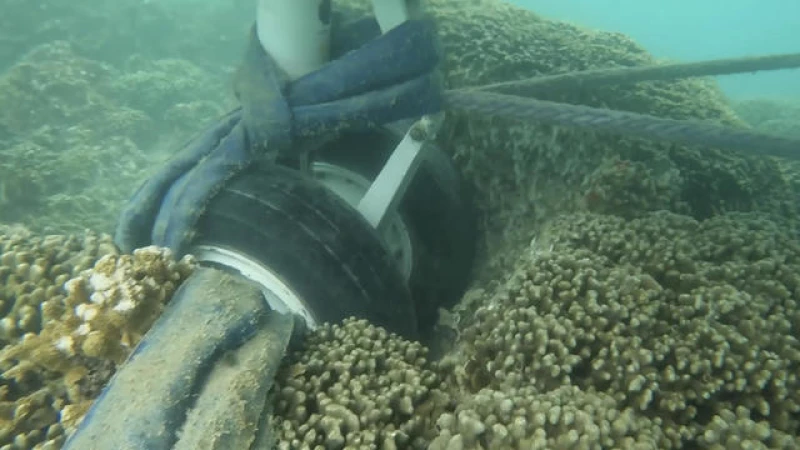U.S. Navy Surveillance Plane Resting on Reef in Hawaii Bay
More than a week after a U.S. Navy surveillance plane overshot a runway in Hawaii and landed instead in an environmentally sensitive bay, new video footage shows tires from the large aircraft are resting on parts of a reef, officials said. The Navy released the footage Wednesday as it works on developing a plan to remove the plane from the water.
There were no injuries to the nine people who were on board when the plane, a P-8A Poseidon, landed Nov. 20 in shallow water just offshore of Marine Corps Base Hawaii at Kaneohe Bay along the northeastern coast of the island of Oahu. The military base is about 10 miles from Honolulu.
The underwater footage shows the "two points of contact the aircraft has with the coral and the remainder of the aircraft floating above," the Navy said. The video shows tires on the coral as tiny fish swim through rock crevices.

A Navy team removed nearly all of the estimated 2,000 gallons of fuel on the plane, Rear Adm. Kevin Lenox said Monday.
The Fuel Extraction Process Completed Successfully in Kaneohe Bay
The salvage team has successfully extracted all the fuel from the tanks of the plane in Kaneohe Bay without any fuel being released into the bay, according to Commander Mark Anderson, the leader of the Navy's mobile diving and salvage unit working at the site. This process will significantly reduce risks for the rest of the salvage operation.
The Plane's Impact on the Coral Reef
Commander Mark Anderson also provided an update on the condition of the plane and its impact on the coral reef. The plane is currently resting on a mixture of coral and sand, with the left engine specifically resting on coral. However, due to the tide, the full weight of the plane is not on the coral. Anderson stated that while the landing may have caused some damage to the coral, there are no "massive chunks missing" at this time.
Potential Damage to the Coral Reef
Wayne Tanaka, the Executive Director of the Sierra Club of Hawaii, expressed concern about the potential damage to the coral reef. He emphasized that the video footage confirms the presence of a jet plane on the coral reef and raises questions about how much the plane has moved or could move. State environmental officials are planning to conduct a damage assessment once the plane is removed.
Kaneohe Bay's Ecological Importance
Kaneohe Bay is not only home to coral reefs but also an ancient Hawaiian fishpond and a breeding ground for hammerhead sharks. The potential damage caused by the plane's presence on the coral reef raises concerns about the overall ecological health of the bay.
Downed Plane in Kaneohe Bay

The Department of Land and Natural Resources said it was still waiting for approval from the military to access the land, but officials do not plan to issue fines for environmental damages because the overshot landing was deemed an accident.
On Monday, the Navy revealed two potential methods to remove the aircraft from Kaneohe Bay. One option is to float the plane and position it within the range of a crane set up on the runway, which would lift it and then set it down on its landing gear once the plane was on land. The other option involves floating the plane on top of cylinders and rolling it up onto the runway. The landing gear is still in good condition.
The Navy is currently investigating the cause of the incident, which involved a P-8A, the military version of Boeing's 737 passenger jet. The plane overshot the runway while flying in rainy weather.
Aircraft expert Peter Forman suggested that the shorter runway at Marine Corps Base Hawaii, combined with winds and bad weather, may have contributed to the accident. He stated, "The pilot probably didn't put the plane down exactly where he wanted to on the runway. It's probably a combination of all those factors put together."
Source: Hawaii News Now
The Navy Faces Criticism for Environmental Stewardship in Hawaii
In 2021, the Navy in Hawaii has faced intense scrutiny regarding its environmental stewardship and transparency. A fuel leak from a fuel storage facility dating back to World War II has resulted in jet fuel contaminating Pearl Harbor's drinking water. This incident has had significant consequences, with approximately 6,000 Navy personnel, their dependents, and civilians reporting physical ailments after being exposed to the contaminated water.
Due to the mounting pressure and concerns raised by the affected individuals, the Navy has made the decision to drain the tanks responsible for the fuel leak. This operation is currently underway, aiming to address the environmental and health risks associated with the contamination.







